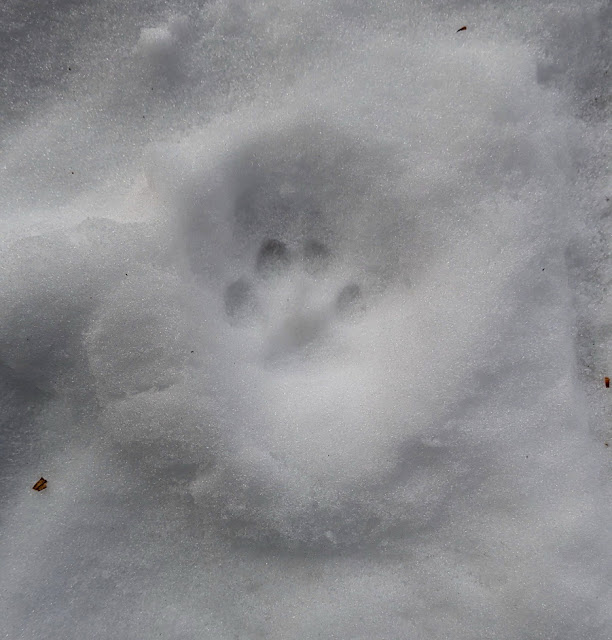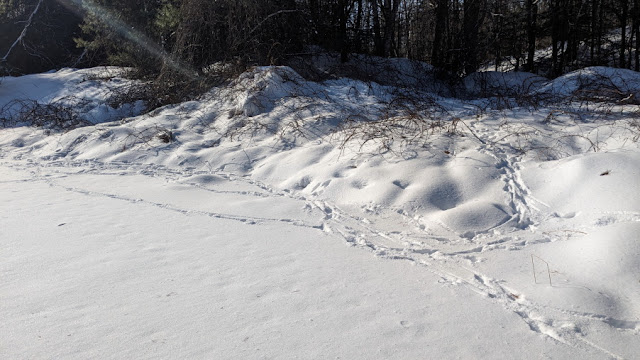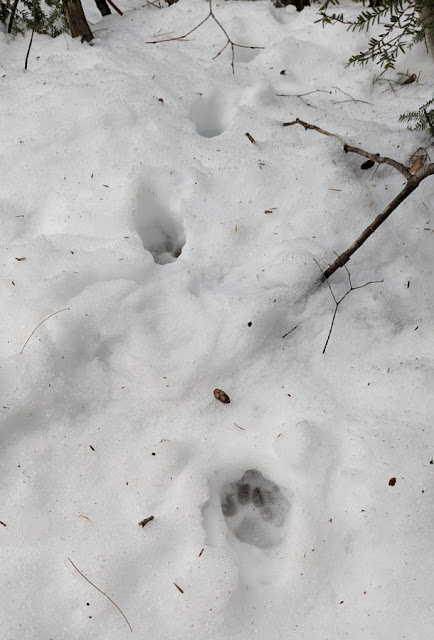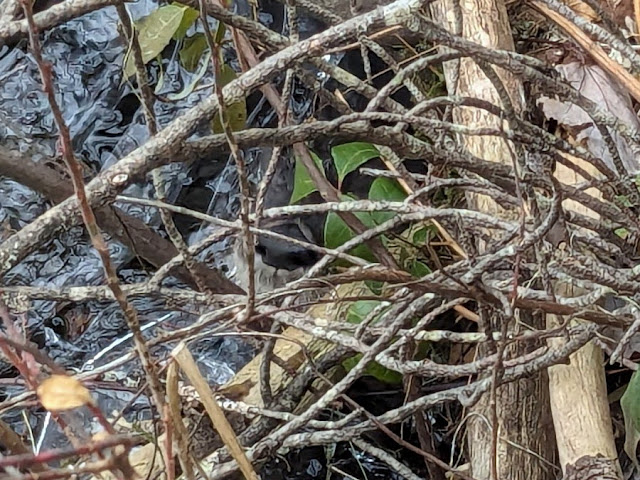More crazy New England weather brought us just about every kind of precipitation this week including the dreaded freezing rain. Fortunately it came after a nice snowfall which gave us a couple of days of perfect dry snow to ski on. And the ice we got was just a thin layer, not enough to be much of a problem with power outages, but enough to make things really pretty for a snowshoe trip in the sparkling forest when the sun came out.
 |
| The view from Crockett's Ledge on Wednesday. |
Trees without leaves handled the weight fine, but the pine and hemlock with their leaves still on had more of a problem.
 |
| Bowed hemlock turned the trail into a limbo course. |
I continued past Crockett's to the White Mountain Ledge, and then heading back to the trailhead I took a chance at exploring the beaver ponds that are encircled by the Blue Trail, knowing full well that high water flowing in streams that run through them would make travel on the ponds treacherous.
 |
| Lots of water flowing in the streams. |
But by following the animal tracks - they know where to walk to avoid getting their feet wet - I was able to get across all four ponds without falling through, though there were a couple of close calls.
 |
| The fox and coyote tracks helped locate the firmest footing. |
The largest pond was easier to cross, but there were still plenty of weak spots to deal with.I was extra careful where streams flow into the ponds as well as out again at the dams that hold the water in.
 |
| Water coming in |
 |
| And then flowing out at the dam. |
It all made for a fun trip on a nice warm day.
It was on a different snowshoe trip that I came across more bobcat tracks.
 |
| A nice set of bobcat prints in the snow. |
I followed the tracks along through thick woods and open clearings.
And eventually came upon a spot where it bedded down for a while beside a tree, either to watch for prey or just to take a short cat nap.
 |
| Note the nearly perfectly round print with no claws marks. |
They are everywhere, on the ground, the feeders, the suet.
 |
| Junco prints on the door mat. |
So it was another roller-coaster weather week where a little fresh snow, a little freezing rain, and a little bright sun conspired to make some memorable outings around Lake Wicwas. Even with freezing rain it's a beautiful place.
 |
| North from the White Mountain Ledge. |
 |
| Mts. Lincoln (left) and Lafayette (tallest), seen from the White Mountain Ledge. |













































